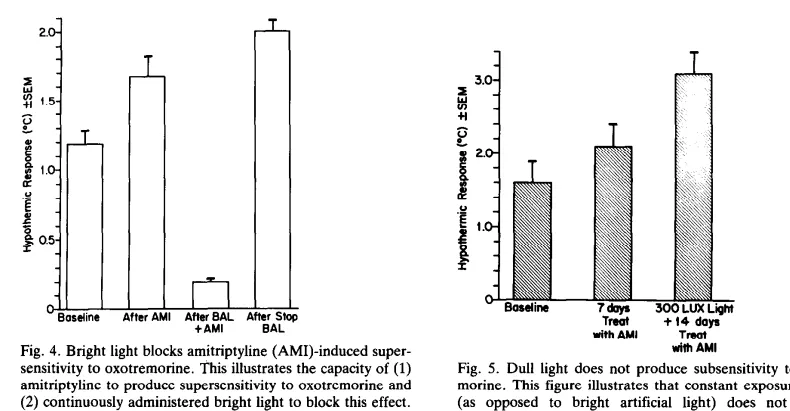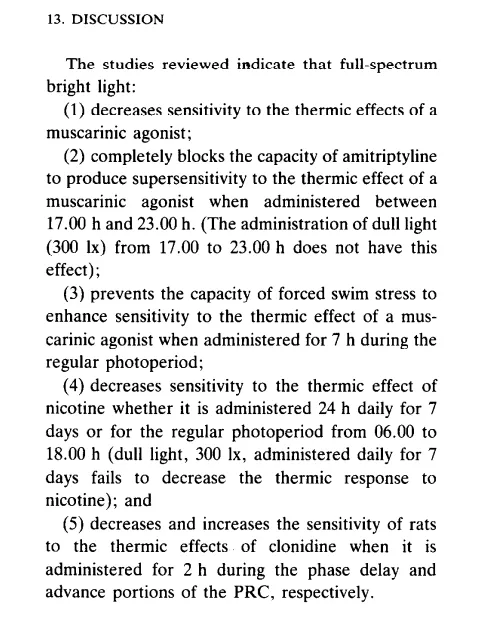Typical room brightness might not be bright enough to help lower the effects of high stress
-
more detailed writeup https://cs3001.substack.com/p/typical-room-brightness-might-not
Chronic inescapable stress creates a supersensitivity to some compounds e.g through the acetylcholine receptor, and giving the stressed animals an agonist causes core temperature to drop a lot.
These researchers found 7000 lux at eye level for 6 hours a day almost fully abolished this effect of stress induced by a compound. They used a fluorescent bulb (typically mainly orange and green wavelengths without much red and blue, but the researchers said they used "full spectrum" for this).

300 lux light at eye level for 6 hours didnt offset the effects of stress at all (a typical room might be 200 - 500 lux at eye level) .
and 7000lux for 2 hours only didn't either7000lux for 8 hours also helped in the swim stress test
Low level lighting can still allow for lower daytime melatonin, but it’s slower than 2000 lux+ which gives a big effect in 15 minutes at 2000 lux vs 150 lux. https://academic.oup.com/jcem/article-abstract/86/1/151/2841140
A cloudy day can be ~1000 lux apparently (which happens to be where effects are seen to max out on some measures).
so this might be the threshold needed in the day to help offset some effects of high stress, or possibly 500lux, if not the full 7000. But for this effect >2 hours and up to 6 hours is needed.
(thermic = hypothermic)

-
@cs3000 nice substack brosef
-
So we should all have multiple high watt incandescent bulbs beaming us like Danny Roddy?